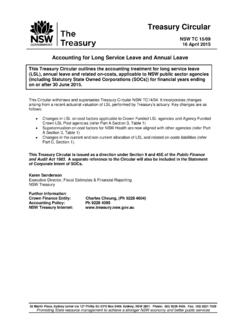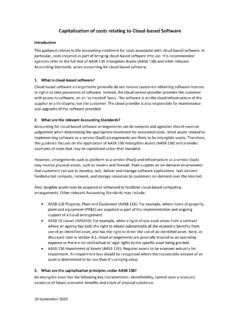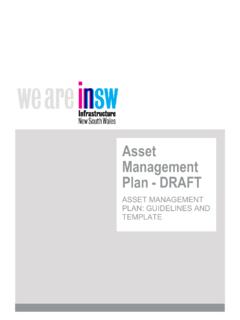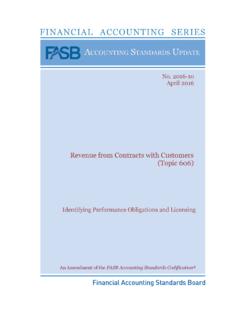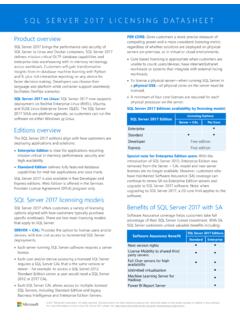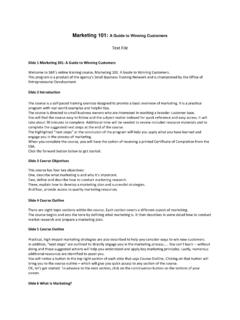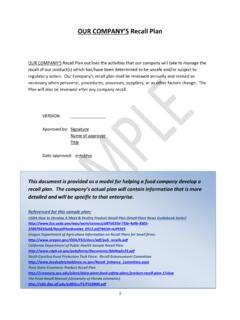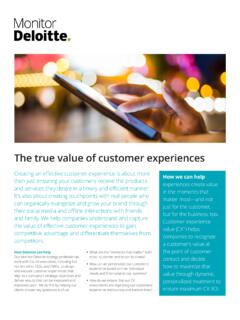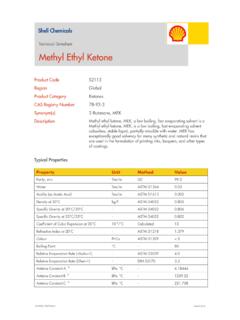Transcription of Guidance for AASB 15 Revenue from contracts with customers
1 Guidance for AASB 15 Revenue from contracts with customers 15 December 2017 Guidance for AASB 15 Revenue from contracts with customers 2 Contents Overview .. 4 Objective .. 4 Main impact .. 4 Scope .. 5 Key Considerations .. 6 Comprehensive Revenue recognition model .. 6 Interaction with other standards .. 6 Portfolio approach .. 7 Contract costs .. 8 3. Five step Revenue recognition model .. 9 Step 1 - Identify the contract with the customer .. 9 Contract criteria .. 10 Enforceability .. 10 Contract term .. 10 11 Combined contracts .
2 11 Additional Step 1 considerations for NFP entities .. 11 Step 2 - Identify the performance obligations in the contract .. 13 Promises in a contract .. 14 Determining when promises are performance obligations .. 14 Determining whether goods or services are distinct .. 15 Series of distinct goods or services .. 16 Additional Step 2 considerations for NFP entities .. 17 Step 3 - Determine the transaction price .. 18 Variable consideration and constraining estimates of variable consideration . 19 Significant financing 23 Non-cash consideration.
3 24 Consideration payable to a customer .. 25 Step 4 Allocate the transaction price to each performance obligation .. 26 Allocation based on stand-alone selling prices .. 27 Allocation of a discount .. 28 Allocation of variable consideration .. 29 Additional Step 4 considerations for NFP entities .. 29 Step 5 - Recognise Revenue when (or as) performance obligations are 30 Control-based Revenue recognition 31 Performance obligations satisfied over time .. 32 Performance obligations satisfied at a point in 34 Guidance for AASB 15 Revenue from contracts with customers 3 4.
4 Other AASB 15 topics .. 35 Contract 35 Principal versus agent .. 40 Licences of intellectual property .. 41 customer options for additional goods or services .. 42 5. Transitional Requirements and Relief .. 45 Transition 45 Full retrospective approach .. 46 Modified retrospective approach .. 47 49 Disaggregation of Revenue .. 50 Contract balances .. 50 Performance obligations .. 51 Significant judgements .. 51 Costs to obtain or fulfil a contract .. 52 Transition disclosures .. 52 Guidance for AASB 15 Revenue from contracts with customers 4 Overview Objective AASB 15 Revenue from contracts with customers (AASB 15) is effective for NSW for-profit public sector agencies from FY2018/19 and a year later ( FY 2019/20) for the not-for-profit (NFP) agencies.
5 The key objectives are: A more robust framework to address Revenue recognition issues Streamline and reduce the volume of the relevant standards and interpretations More useful information to users through expanded disclosures AASB 2016-3 Amendments to Australian Accounting Standards Clarifications to AASB 15 (AASB 2016-3) was subsequently published to clarify some concepts to AASB 15 and provide further practical expedients on transition to AASB 15. AASB 2016-8 Amendments to Australian Accounting Standards Australian Implementation Guidance for Not-for-Profit Entities (AASB 2016-8) was published to include an appendix to AASB 15 on implementation Guidance for NFP entities.
6 This implementation Guidance for the NFP entities has been incorporated in this document in grey shaded text. This Treasury Guidance provides an overview of the requirements of AASB 15 including disclosures and practical transitional impacts. However, agencies still need to review AASB 15 in detail to ensure they understand its requirements. Agencies should review the illustrative examples in IFRS 15 Revenue from contracts with customers (IFRS 15) to understand the application of AASB 15 to particular aspects of a contract with a customer . The illustrative examples are not part of AASB 15 but available in AASB s website- IFRS references are used in this Guidance to draw attention to the basis of conclusions on IFRS 15.
7 Also refer to the clarification issued in April 2016 on some of the basis of conclusions on IFRS 15. Main impact Currently, Revenue transactions are often separated into components that are accounted for under different Revenue standards and interpretations. This is no longer the case as AASB 15 provides a single framework for Revenue recognition using a five-step model. AASB 15 replaces the following: AASB 111 Construction contracts (AASB 111) AASB 118 Revenue (AASB 118) Interpretation 13 customer Loyalty Programmes Interpretation 15 Agreements for the Construction of Real Estate Interpretation 18 Transfers of Assets from customers Interpretation 131 Revenue Barter Transactions Involving Advertising Services Interpretation 1042 Subscriber Acquisition Costs in the Telecommunications Industry.
8 Guidance for AASB 15 Revenue from contracts with customers 5 Key changes AASB 15 is principles-based and provides substantial application Guidance . AASB 15 extensively discusses various Revenue recognition topics with examples. Revenue recognition is now based on when control of the goods or services transfer to the customer . Under AASB 118, recognition was based on when risks and rewards transferred. Risks and rewards are retained as an indicator of the transfer of control, but not the only indicator. There is more specific Guidance on identifying performance obligations in a contract, compared to existing pronouncements.
9 Revenue recognition may be accelerated or deferred, compared to existing pronouncements. In particular for Revenue contracts with multiple components, variable consideration, and licences. Interest and dividend income are excluded from the scope of AASB 15 and moved to AASB 9 Financial Instruments. There are significant additional disclosure requirements to provide more useful information to financial statement users. AASB 15 primarily aims to be a single comprehensive Revenue recognition framework, with a clearly explained Revenue recognition approach and elaborate Guidance on various Revenue streams.
10 While these changes are significant, entities having Revenue transactions with complex features like multiple deliverables ( bundled goods and services), variable selling prices (including rebates, discounts, etc.), non-standard contract clauses etc. are most likely to be impacted. Therefore, there may be a limited impact for many NSW public sector entities, especially NFP entities. However this can only be determined through a review of Revenue contracts . Scope An entity should apply AASB 15 to all contracts with customers , except (AASB ): lease contracts ; insurance contracts ; non-monetary exchanges between entities in the same line of business to facilitate sales to customers or potential customers ; and financial instruments and other contractual rights or obligations within the scope of AASB 9 Financial Instruments, AASB 10 Consolidated Financial Statements, AASB 11 Joint Arrangements, AASB 127 Separate Financial Statements and AASB 128 Investments in Associates and Joint Ventures.


